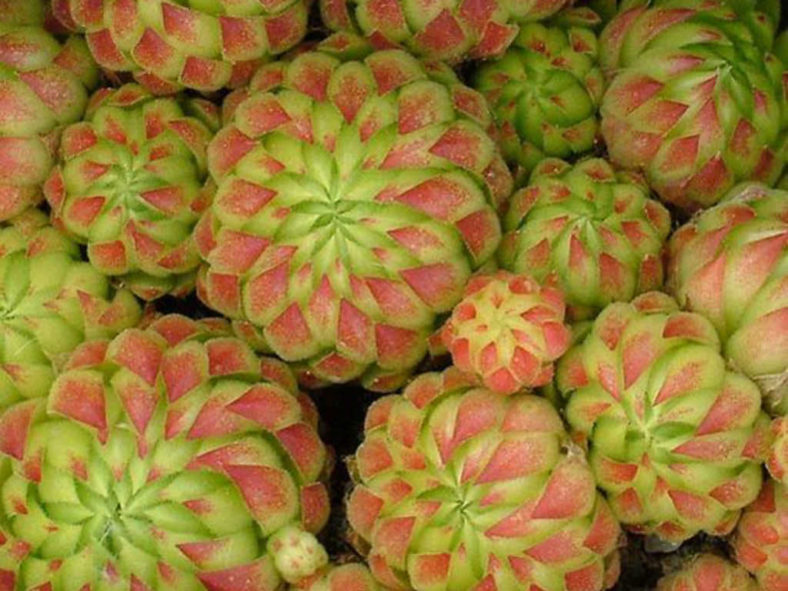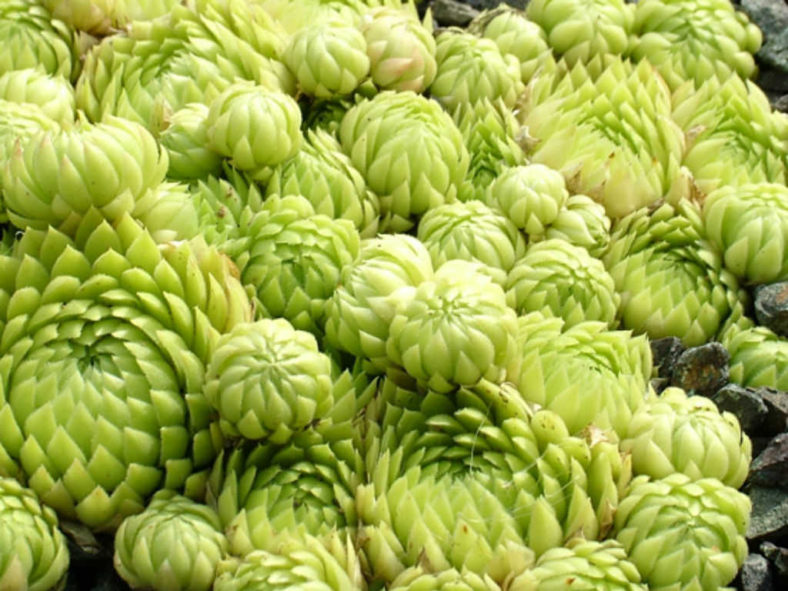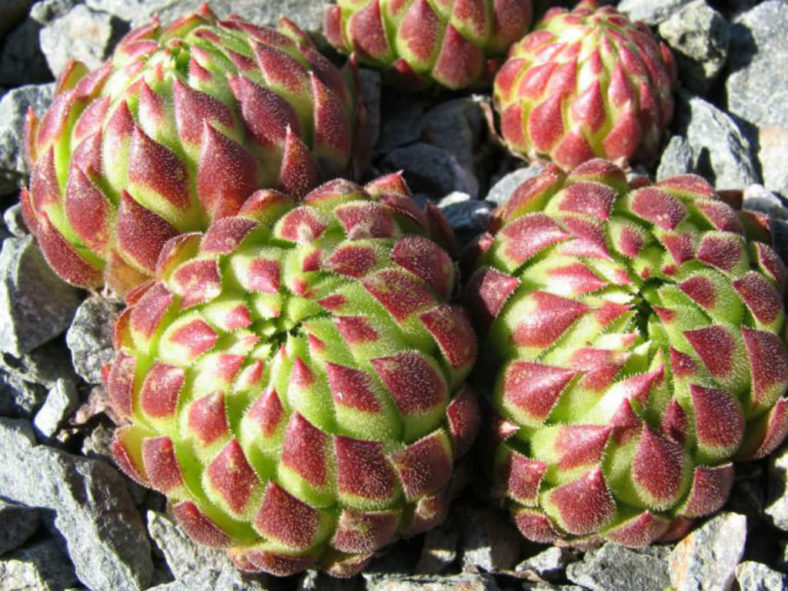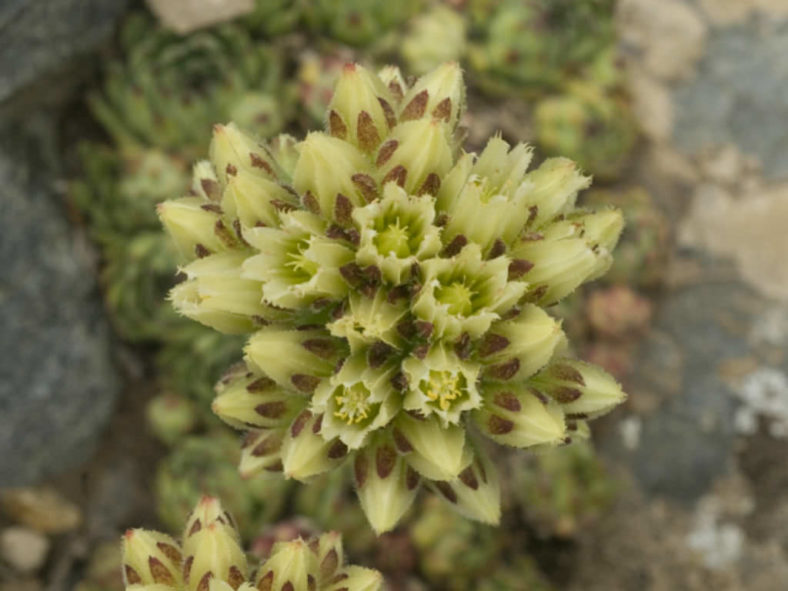Scientific Name
Sempervivum globiferum subsp. allionii (Jord. & Fourr.) 't Hart & B.Bleij
Common Name(s)
Rollers, Roller
Synonym(s)
Diopogon allionii, Diopogon arenarius subsp. allionii, Diopogon hirtus subsp. allionii, Jovibarba allionii, Jovibarba globifera subsp. allionii, Jovibarba hirta subsp. allionii, Sempervivum allionii
Scientific Classification
Family: Crassulaceae
Subfamily: Sedoideae
Tribe: Sedeae
Subtribe: Sedinae
Genus: Sempervivum
Origin
Sempervivum globiferum subsp. allionii is native to the southwestern Alps (France and Italy).
Description
Sempervivum globiferum subsp. allionii, formerly known as Jovibarba globifera subsp. allionii, is a cute small succulent that forms hemispherical rosettes of pale green to almost yellow leaves, often with reddish-brown tips. The rosettes grow up to 1.6 inches (4 cm) in diameter, producing numerous round offsets that are lightly attached to delicate stolons and easily roll away from the mother rosette to put down roots. Leaves are fleshy, finely hairy, lance-shaped, and curved. They are up to 0.6 inches (1.5 cm) long and 0.2 inches (0.5 cm) wide.
The flowers are up to 0.4 inches (1 cm) in diameter, with six pale greenish-yellow or yellow petals, and appear in clusters on leafy, up to 6 inches (15 cm) tall stalks in summer. Offsets survive the mother rosette that dies after flowering.

Hardiness
USDA hardiness zones 4a to 10b: from −30 °F (−34.4 °C) to 40 °F (+4.4 °C).
How to Grow and Care
Sempervivums are not difficult to grow, provided they are not waterlogged and killed from excess watering. They can be easily grown outdoors and in containers, and they earned the name "Houseleeks" from their tendency to root on the roofs of houses. After the mother plant flowers, it will naturally die, but the plant has likely produced many offsets that will continue to grow by this time. These are excellent for cold windows. Sempervivum earned their popular name, "Hen and Chicks," from their growth habit. The mother plant, or hen, sends off numerous offsets, clustering around her base like chicks. These offsets can be easily repotted, or the plants can be left to form a clumping mat.
Repot as needed, preferably during the warm season. To repot a succulent, ensure the soil is dry before repotting, then gently remove the pot. Knock away the old soil from the roots, removing any rotted or dead roots. Treat any cuts with a fungicide. Place the plant in its new pot and backfill it with potting soil, spreading the roots out as you repot. Leave the plant dry for a week or so, then begin to water lightly to reduce the risk of root rot.
Learn more at How to Grow and Care for Sempervivum.
Links
- Back to genus Sempervivum
- Succupedia: Browse succulents by Scientific Name, Common Name, Genus, Family, USDA Hardiness Zone, Origin, or cacti by Genus
Photo Gallery
Click on a photo to see a larger version.


